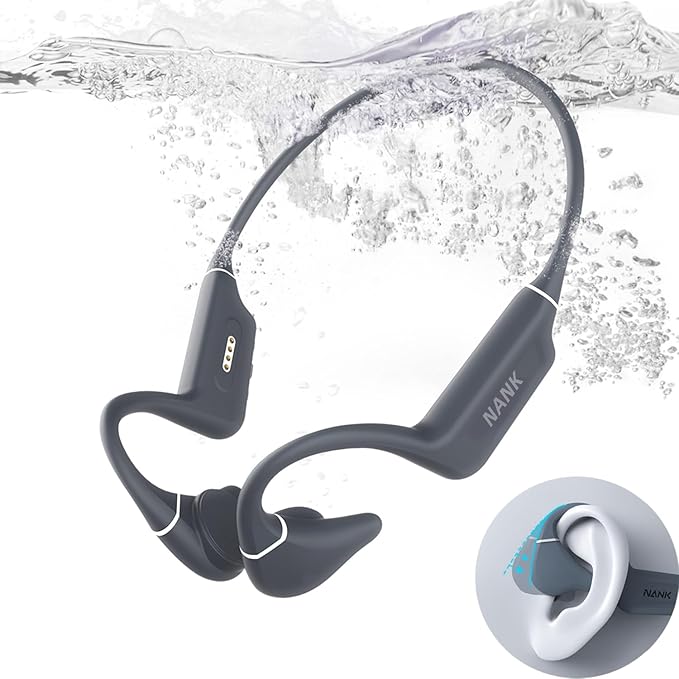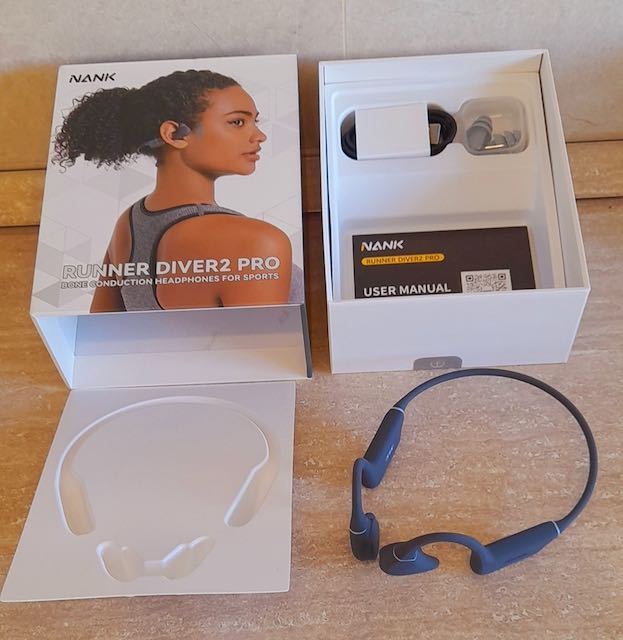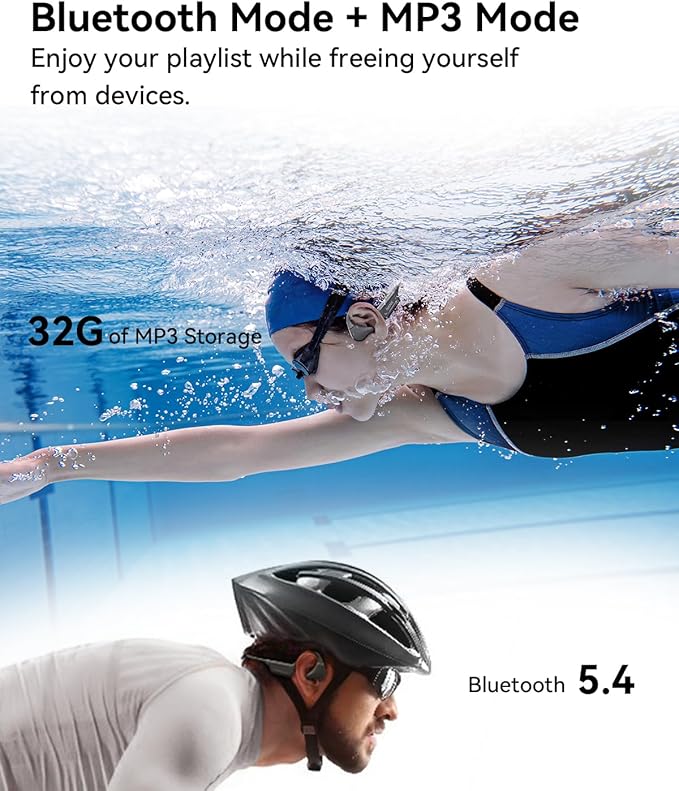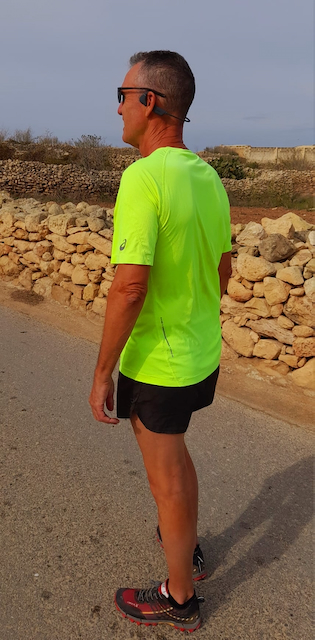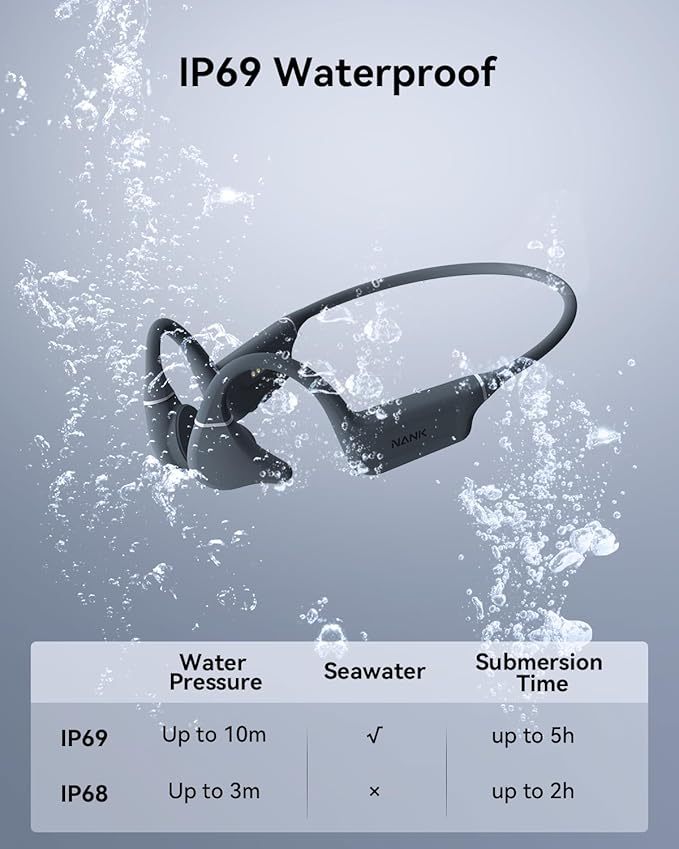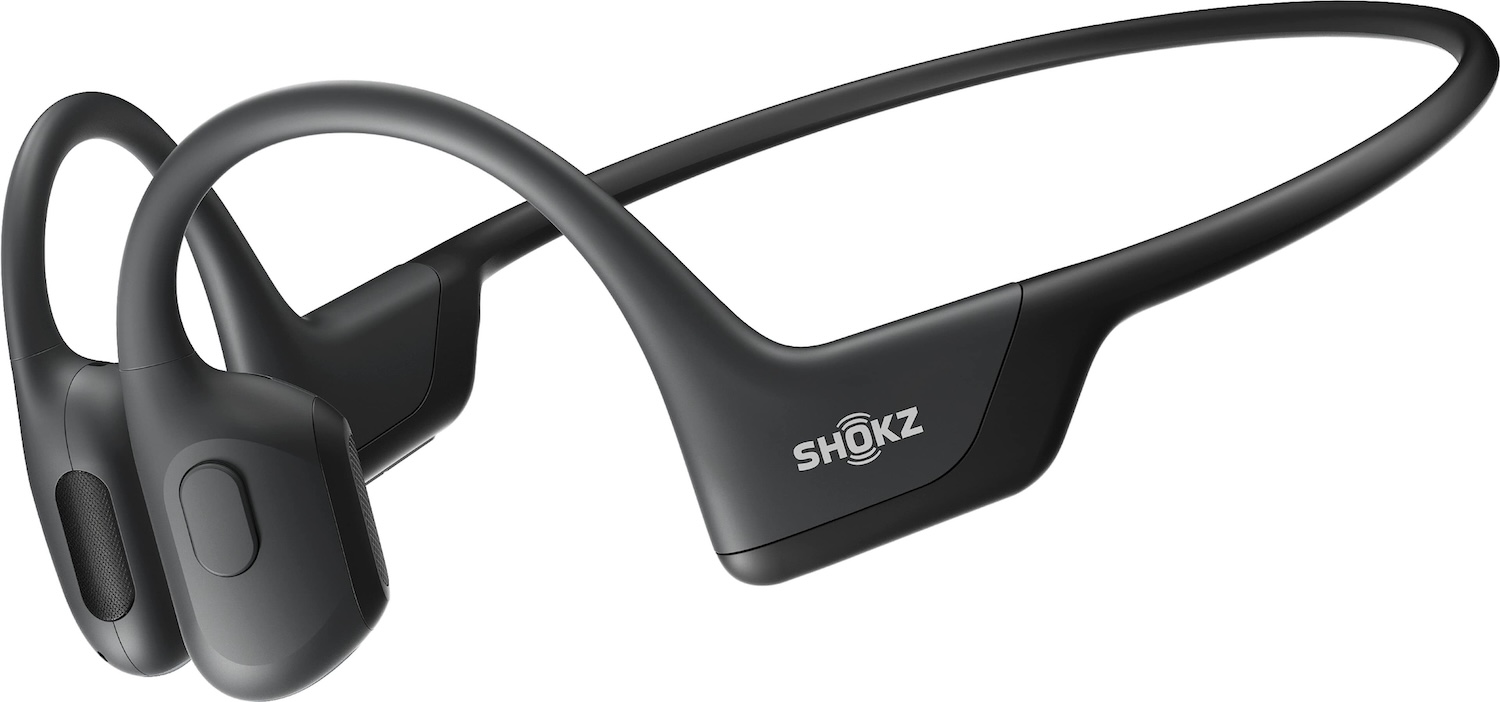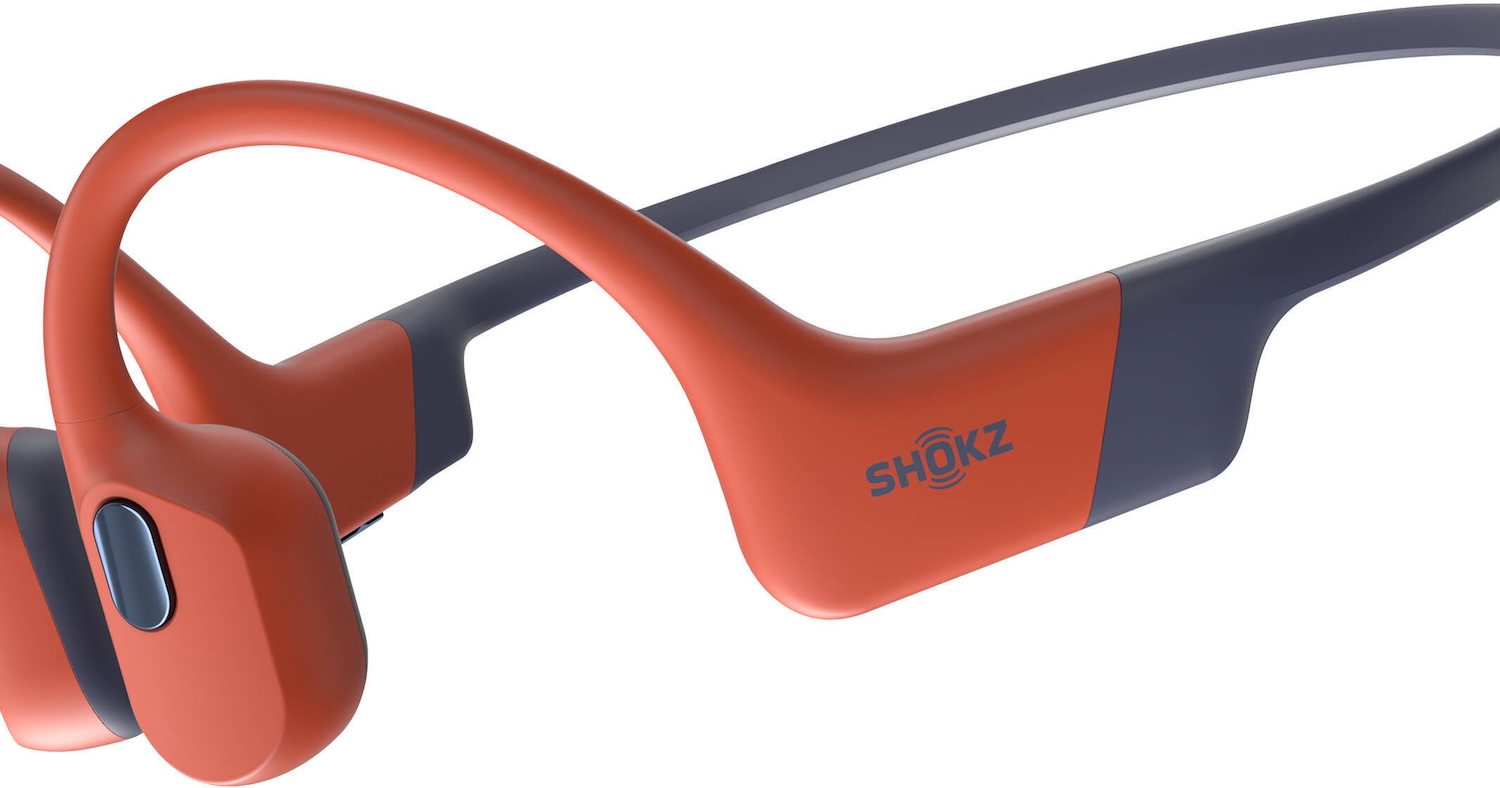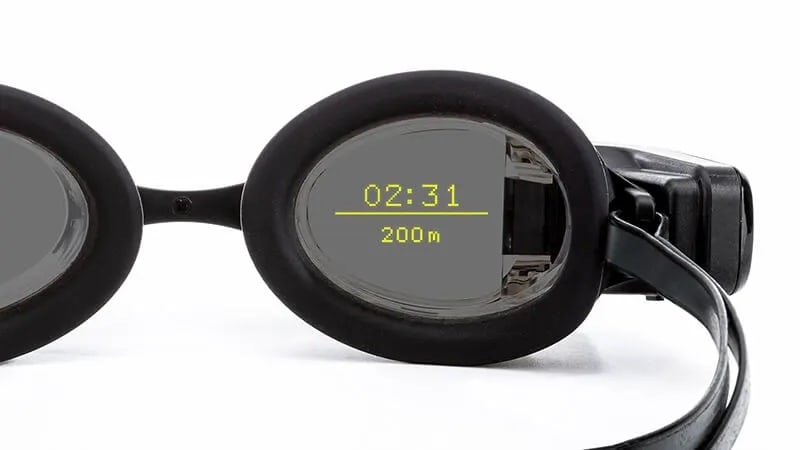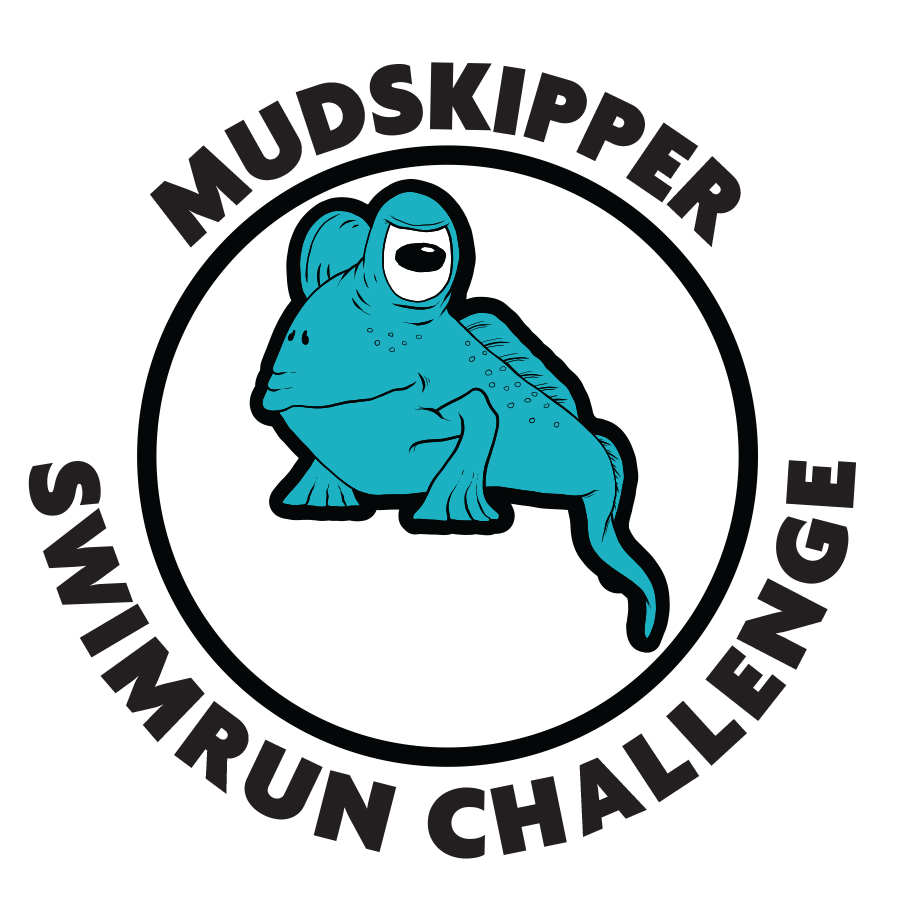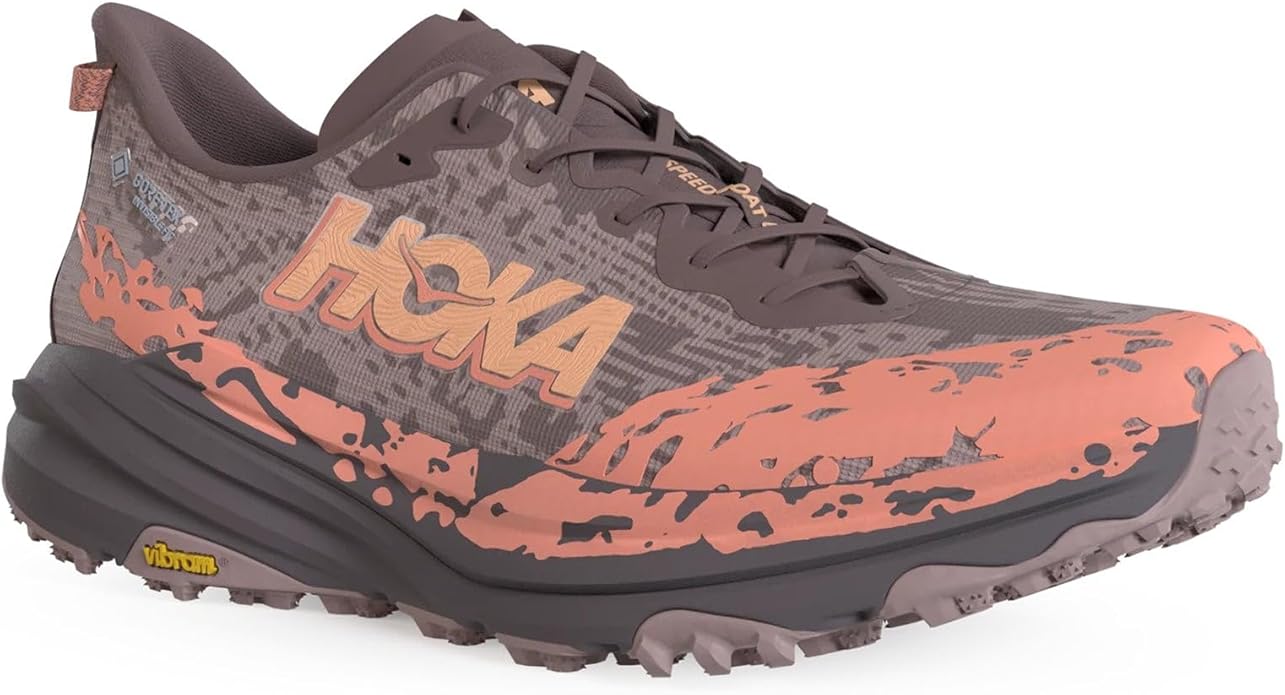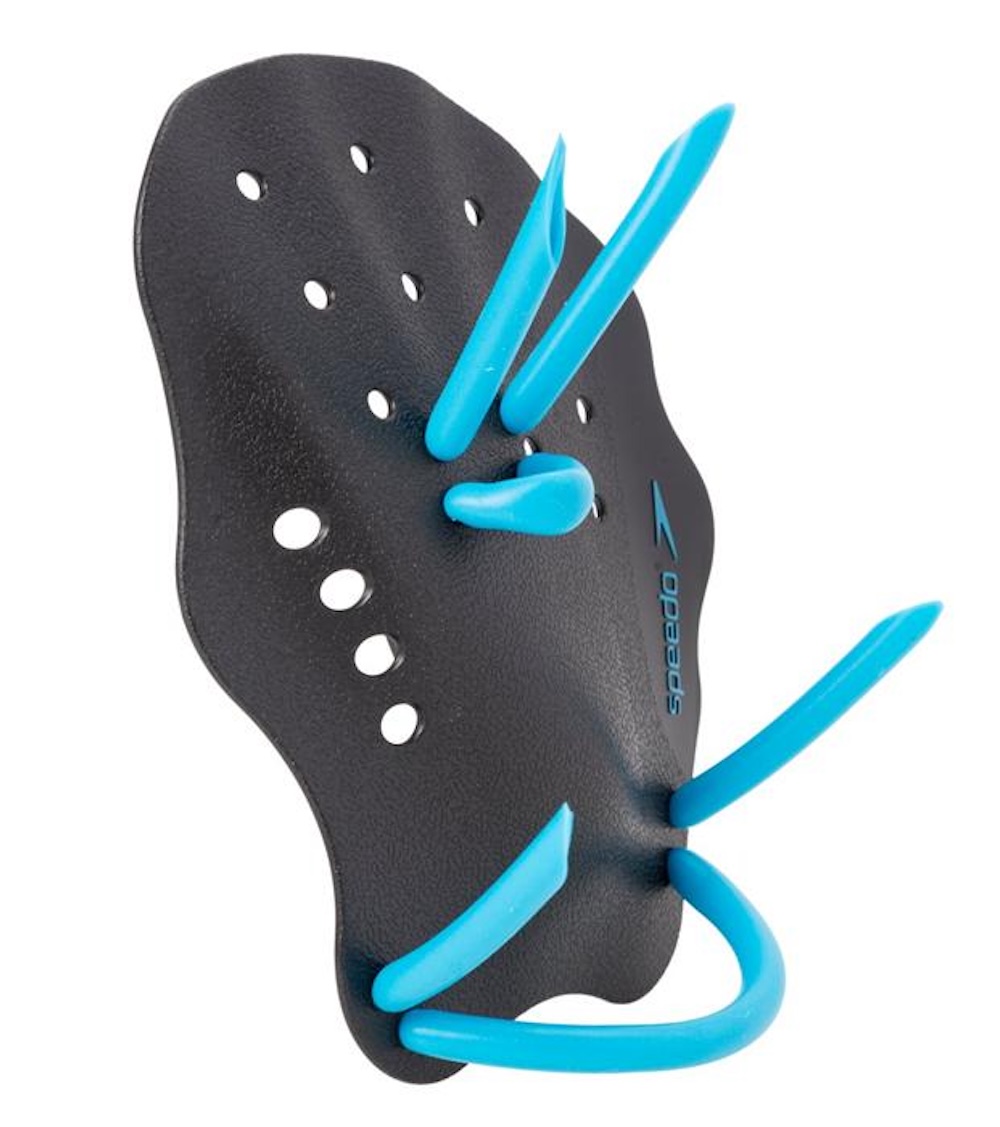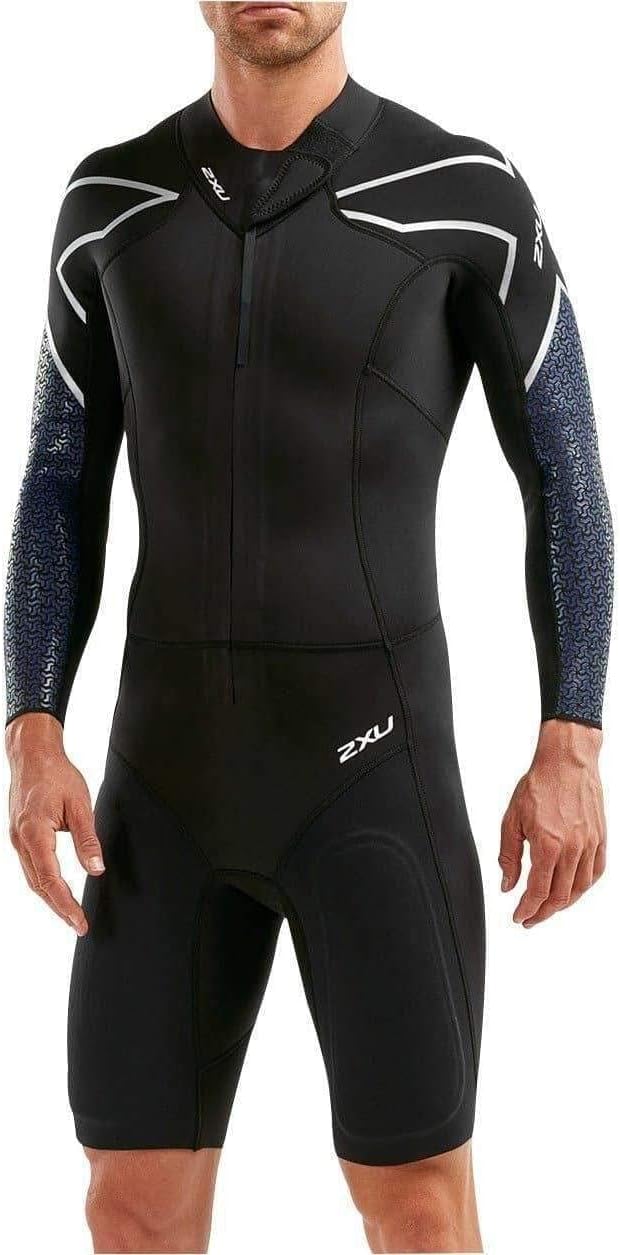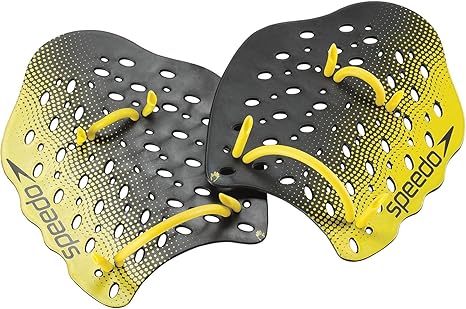Best Bone Conduction
Headphones For Swimrun
By Richard Mitchell and Mogsy Ford
Updated March 2025
For the best Bone Conduction headphones for swimrun, look at the RunnerDiver2 Pro from Nank. These Bone Conducting headphones have several features that make them great for listening to music and making phonecalls via bluetooth to your phone while training.
The other bone conducting headphones to look at are the Shokz OpenRun Pro2 and the Shokz OpenSwim Pro.
While these are up there with the best headphones for running, there are one or two things to bear in mind when it comes to swimming. Which are the best headphones for swimming?
(As an Amazon Associate we earn from qualifying purchases.)
Nank RunnerDiver2 Pro
What's in the box?
We received a set of NANK Headphones to review.
Watch our unboxing video below to get an idea of how these Bone Conduction headphones look and feel.
Best Bone Conduction Headphones
What is bone conduction?
According to techradar.com;
"Bone conduction headphones are placed right at the top of your cheekbones so vibrations pass through the bone of your upper jaw, bypassing your eardrums. Sound is passed directly into the cochlea via the bone, rather than using vibrations moving through the air as is the case with conventional headphone designs.
An obvious benefit is that there’s nothing being pushed into your ear canal, but the real appeal with bone conduction headphones is that you can carry on with your outdoor pursuits while also remaining fully able to hear what’s going on around you. The fact the sound waves are passing through the bone instead of through your eardrums can also make conduction phones a potential solution for some people with hearing disabilities."
Out of the box, these Bone Conducting headphones have a solid, premium quality feel and look. I like the soft matt surface, which seems to help prevent the headphones from sliding around on your head.
Ready to buy? Check our deal at Amazon for a great price!
Best Bone Conducting Headphones
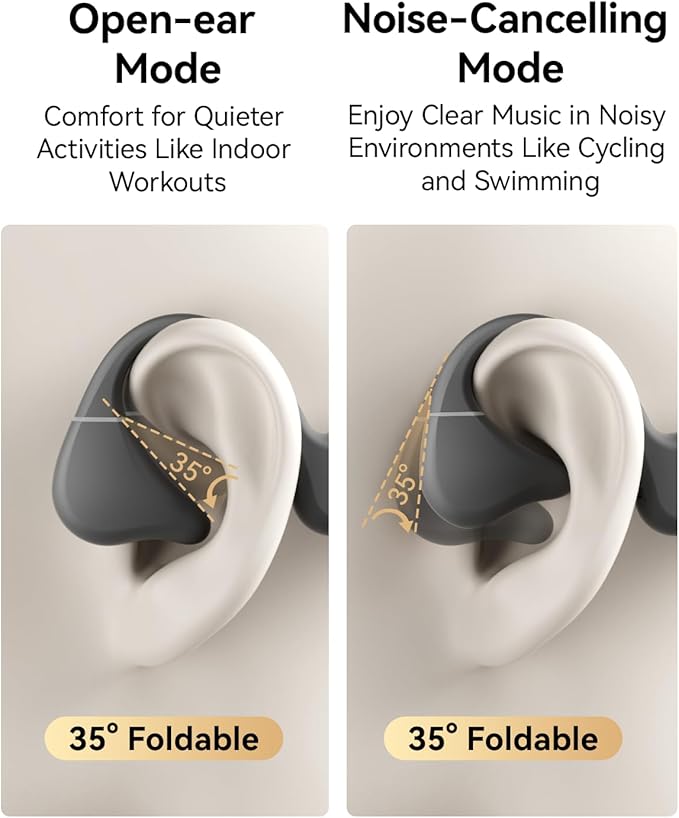
The connector piece between the control section and the bone speaker has a hinge, which means you can angle the bone speaker and earpiece forwards to expose the ear canal or backwards to cover the ear canal, making the music louder. There's also a hinge in the same spot on the other side.
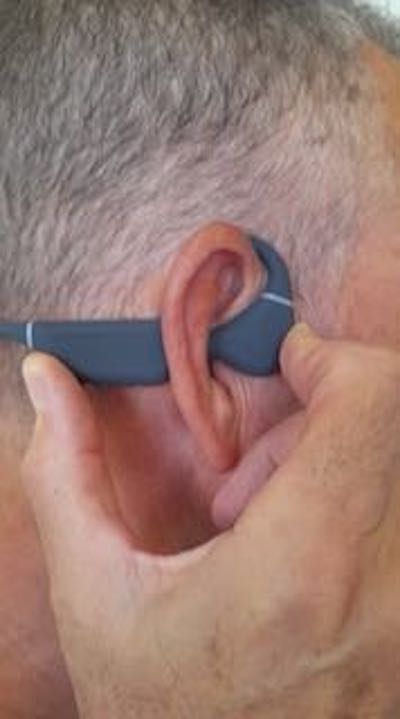 Bending the earpiece back into the ear
Bending the earpiece back into the ear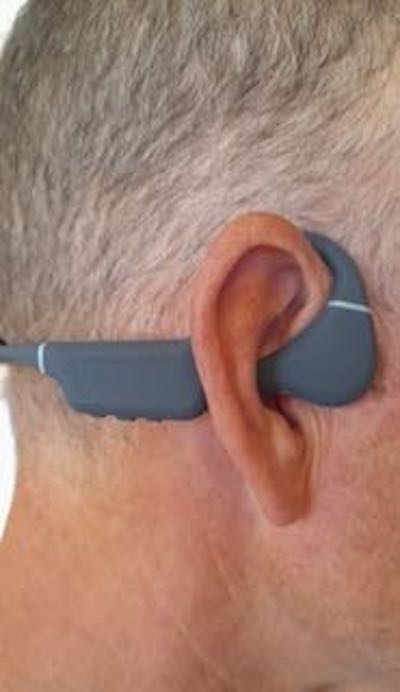 Earpiece pushed back into the ear for noisy environments
Earpiece pushed back into the ear for noisy environmentsIn the picture above, you can see the control unit behind the ear, with 3 small buttons to control the function and volume.
In the box there is a small silicone strap with a loop and a 'button' at each end. This can be looped around the neck cable, pushing the 'button' through the loop to secure it, on both sides left ad right. You can see how this adds security to the fit of the headphones.
To be honest, I'm not sure it's needed; on a training run doing hill reps I did not notice any movement at all, even when shaking my head to try to dislodge the 'phones!
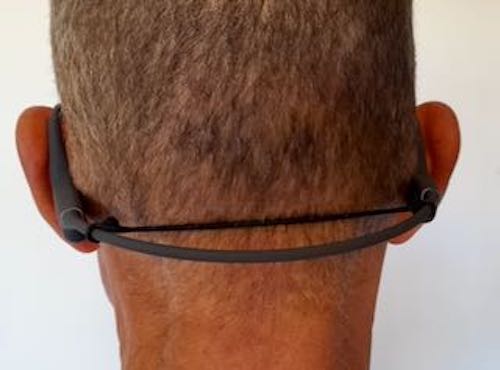 The silicone stabilising strap
The silicone stabilising strapAfter unpacking the headphones from the box and looking through the instructions, I attached the charging lead with the magnetic plug to the headphone charging socket. The other end has a standard USB plug, which I plugged into my laptop.
When the headphones are charging a blue light appears, to confirm the connection. While charging, I also opened Music on my Mac and dragged 80 music tracks over to the Nank icon on my desktop, and the music transferred over smoothly, although it took a few minutes.
When the headphones were fully charged, I put them on. This is an over-the-ear design, and the ear loops felt very comfortable and stable. Despite these 'phones having a solid feel, they are very light, and did not cause any pressure on my ears.
When I turned them on (hold the function button for 3 seconds), a voice comes on to announce that they are in bluetooth mode, by default. If you have your phone nearby you can connect the two devices by bluetooth and listen to music from your phone, or take a phone call.
Pressing the function button 3 times rapidly switches the 'phones to internal memory, and the playlist starts automatically. I was surprised at how good the headphones sound, and also at how loud they could go! While not having the bass performance of full over-ear headphones, the sound quality is excellent - I am a convert to bone conducting headphones!
Ready to buy? Check our deal at Amazon for a great price!
As noted above, when out on a training session doing hill reps, I did not notice any movement of the headphones on my ears or head - nothing.
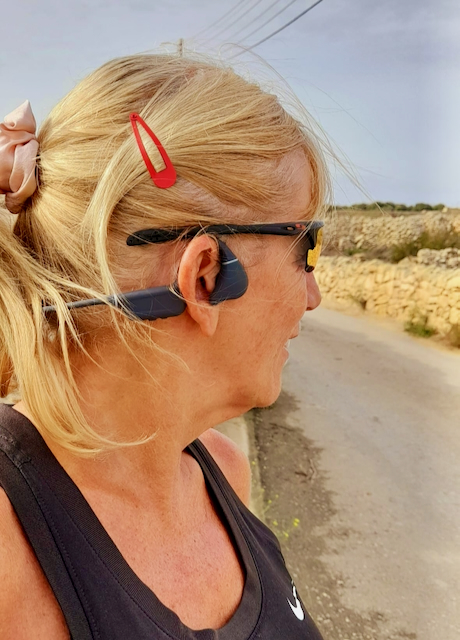
Swimming with the Nank Headphones
So far, so good when it comes to running; how about swimming?
There are a couple of issues to bear in mind when swimming with these bone conducting headphones:
- According to Nank, you should not wear them in water for more than 40 minutes.
- If swimming in salt water, the charging pins may corrode over time - be sure to rinse the salt water off!
- Wearing a swim cap; does it go over or under the headphones?
- Volume - there is a volume setting for swimming, which is louder. You may also want to use one of the ear inserts to reduce water getting into your ears and also to improve the sound.Are these bone conduction headphones the best headphones for swimming?
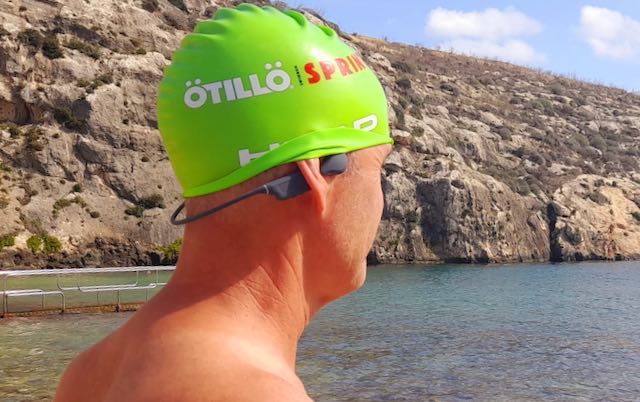 Swimcap folded up to show the headphones
Swimcap folded up to show the headphones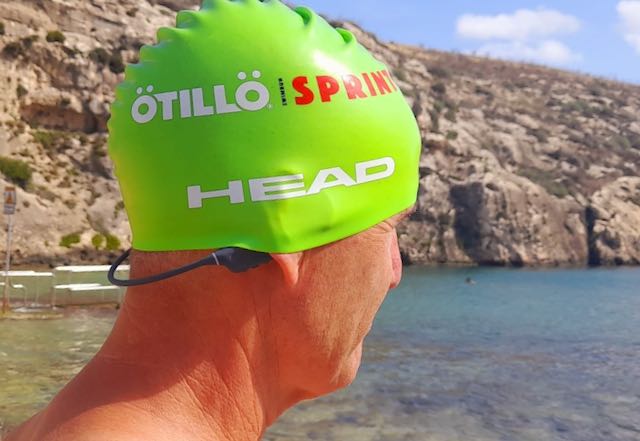 Swimcap folded down to cover headphones
Swimcap folded down to cover headphones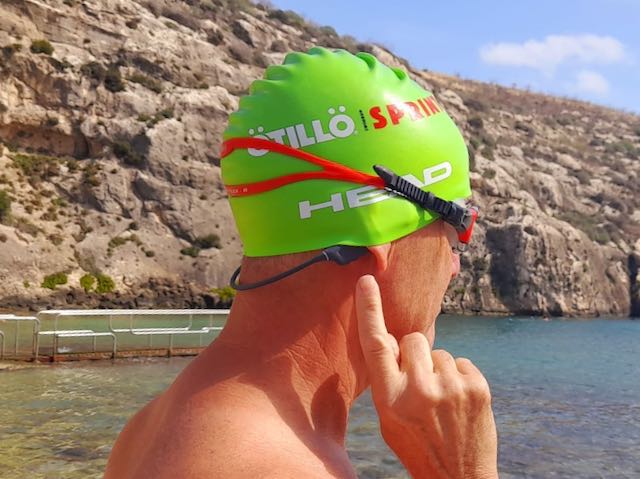 Goggles on; I can still reach the control buttons
Goggles on; I can still reach the control buttons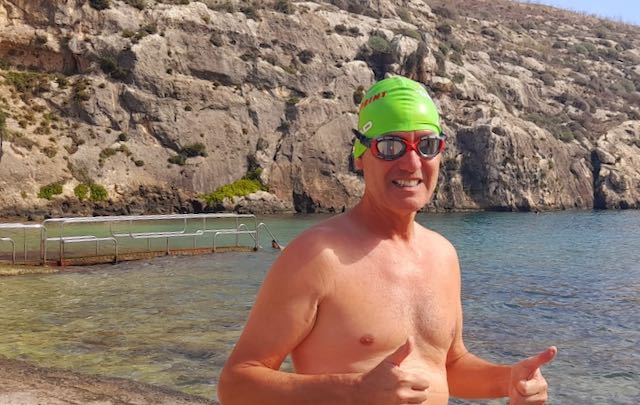 Set to go!
Set to go!I wore the headphones for a 20-minute swim session at our local training spot on Gozo, Malta. Although some water did get into my ears, it did not seem to affect the sound.
With the volume set to "Swim", (in MP3 mode just press the Volume button briefly to toggle between Standard sound and Swim sound), the music was clear, with great volume and decent bass.
The headphones were comfortable under my swimcap without any pressure points or uncomfortable pinching.
Shokz Bone conduction headphones
The Rivals from Shokz are the OpenRun Pro2 and the OpenSwim Pro.
What's the difference? As the names imply, the OpenRun are aimed at runners, and the OpenSwim are aimed at swimmers! BUT there are some important differences between the two. AND, how do they stack up against the Nank headphones?
What makes the Nank RunnerDiver headphones stand out? Of the 3 headphones here, the Nank are the heaviest, at 32g compared to 30g for the OpenRun and 27g for thre OpenSwim. However, the difference is negligible.
However, the Nank 'phones have the highest water resistance rating (IP69), which equates to 10 meters for 5 hours. So, if you are looking at using your headphones in the pool or for open water, the Nank are the most water resistant.
What else? The battery life is similar for all 3 models, from 9 hours for the OpenSwim, 10 hours for the Nank, and 12 hours for the OpenRun Pro2. Rather oddly, although the OpenRun have the longest battery life, they also have the smallest memory, at 8GB while the other 2 have 32GB memories. This implies that you have to rely on bluetooth from your phone for more music capacity.
When it comes to technology, the Nank 'phones have the latest bluetooth 5.4 while the Shokz still use 5.3 - a small difference. However, the Shokz OpenRunner Pro2 have the edge in sound quality due to their updated bass transducers, which give a more solid, punchy bass and mid-range than the others.
Comparison Table
|
Headphone Model |
Nank RunnerDiver 2 Pro |
Shokz OpenRun Pro2 |
Shokz OpenSwim Pro |
|
Weight |
32 grams |
30 grams |
27 grams |
|
Battery Life |
10 hours |
12 hours |
9 hours |
|
Water Resistance |
IP69 |
IP55 |
IP68 |
|
Storage |
32GB |
8GB |
32GB |
|
Bluetooth |
5.4 |
5.3 |
5.3 |
|
Sound Quality |
Good |
Great |
Good |
So, the best headphones for swimming? Compared to the Shokz headphones, the Nank SwimmerDiver2 Pro are definitely the best, with the highest water resistance, the best bluetooth, and a good sound experience!
Needless to say, the Shokz 'phones are also very good, and will not disappoint, but DO NOT use the OpenRun Pro2 model for swimming!
Ready to buy? Check our Nank deal at Amazon for a great price!
For more information on the Shokz OpenRun Pro2 CLICK HERE
For more information on the Shokz OpenSwim Pro CLICK HERE
Disclosure: The Nank bone conducting headphones were sent to us by Nank for review. We have no financial arrangement with Nank.
Monitor your activity and performance while you are swimming with the
CLICK HERE for further details and the BEST PRICE at Amazon!
www.swimrun-advice.com works with the following Swimrun companies:
